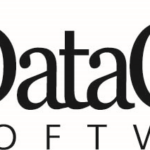DataCore Software’s newly released MaxParallel for SQL Server offers an interesting IO optimization feature to help prevent bottlenecks. Matt Crape thinks the solution has some interesting application for distributing an otherwise heavy workload to make it more manageable. He’s interested in learning more about it in the future and getting into the weeds on how it works.
Datacore Tech Field Day 15 Reap
The CTO Advisor, Keith Townsend, put together a full video recap series looking back at Tech Field Day presenters from last month. In his final video, he looks at DataCore Software, who debuted their MaxParallel for SQL Server at the event.
Spartans and Servers and Storage, Oh My!
James Green explores the IT lessons found in the legendary Battle of Thermopylae, bottlenecks can be a big deal. He uses this example of a serialized approach to combat to show why parallelism is important both in ancient combat and for I/O in the modern enterprise. A modern example of this is DataCore Software’s just released MaxParallel for SQL Server which parallelizes workloads to optimize them for multiple CPUs. It’s a really fun metaphor and a great read!
DataCore MaxParallel for SQL Server – Whats that about then?
DataCore Software debuted their MaxParallel for SQL server solution at Tech Field Day last month. This uses parallel processing to allow multicore systems to begin working on I/O requests without waiting for other cores to be complete. For SQL Server, this results in X quicker response and 60% more transactions processed. At the event, Ian Sanderson found out that this doesn’t specifically target SQL workloads, but instead uses a Least Recently Used caching mechanism to evict old data across the board.
Inefficiencies of large systems
Inspired by DataCore Software’s Tech Field Day presentation, Keith Townsend reflects on the inefficiencies of large organizations, using Microsoft as an example. Microsoft is filled with skilled engineers, but often can’t be responsive to customer requests for giant projects like SQL server. This is where DataCore can come in with their I/O filter, which provides parallel streams to the storage sub-system, ultimately giving applications more I/O bandwidth.
Techfield Day 15 Preview: DataCore
DataCore presents at their first Tech Field Day this week. Keith Townsend digs into their background a little bit to give some context prior to their presentation. The company offers a virtual SAN solution, and Keith wants to know how they will differentiate from competitors like vSAN, Nutanix and HPE SimpliVity. While the market may be crowded, Keith sees room for as long as a company can eke out more performance from the underlying storage. DataCore does this via parallel I/O, which has benefits for analytics workloads specifically.
TFD15 Primer: Datacore
DataCore Software is presenting at their first Tech Field Day event next week. Matt Crape found this a little surprising since the company has been around for almost twenty years, and has been a player in the storage virtualization market with SANsymphony since 2011. At first look, Matt found running on Windows Server to be an odd choice for SANsymphony, but ultimately makes the case that the ecosystem support makes sense for the product. Since SANsymphony gets the drivers support of Windows, what you’re left with is a robust, extensible, software-based solution.








